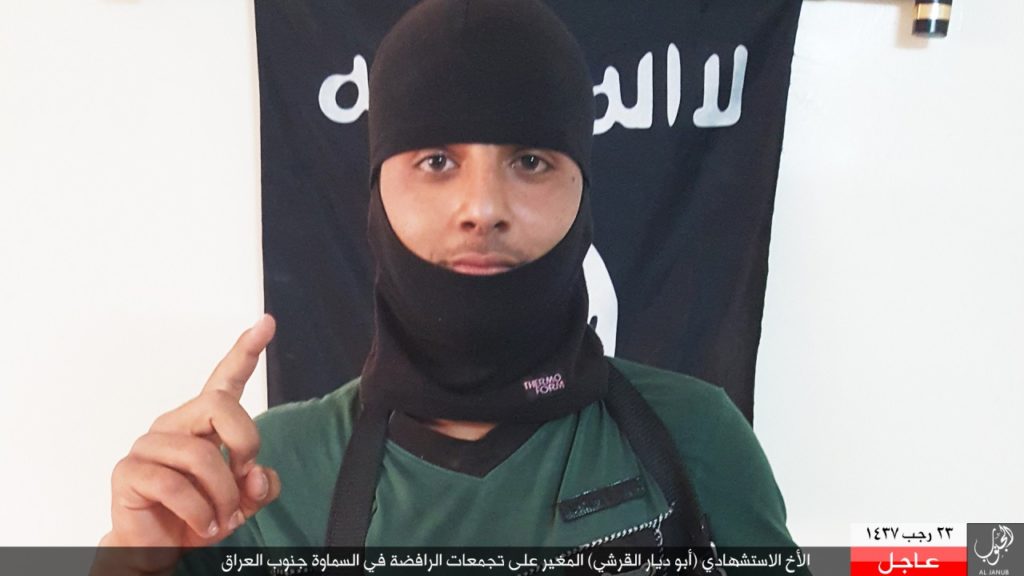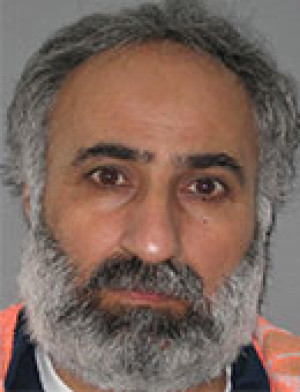
Abu Diyar al-Qurayshi was one of the “martyrs” chosen to take part in a campaign named after Abu Ali al Anbari.
The Islamic State has named a series of deadly attacks throughout Iraq and Syria in honor of one of its most senior leaders: Abu Ali al Anbari. Suicide bombers and other fighters have killed dozens of people since the campaign was launched on Apr. 30.
The Pentagon confirmed in March that Anbari, who had a number of other aliases, was killed in a US counterterrorism operation. Secretary of Defense Ashton Carter told reporters that Anbari played multiple roles within the so-called caliphate, including having a hand in its “external” operations, meaning plots targeting the West. Anbari was also a major ideologue within the group. Islamic State supporters have posted more than three dozen of his lectures in Arabic online. [See LWJ report, Pentagon announces death of senior Islamic State leader.]
Jihadists frequently name their military offensives after fallen leaders. The Taliban’s battles this year have been dedicated to Mullah Omar, the group’s first emir, who died in 2013. In January, the Islamic State named its quest to capture more territory in Libya after Sheikh Abdul Mugirah al Qahtani, who led the “caliphate’s” men in the North African nation until his demise late last year.
The Islamic State has promoted “The Battle of Abu Ali Al Anbari” across its many propaganda outlets. Al Bayan Radio, which streams content and also produces a daily newsletter, has listed several operations as part of the campaign. Other jihadist media outfits have documented additional attacks.
The details provided in the Islamic State’s reports are inconsistent, in some ways, with independent press reporting. For instance, media accounts indicate that the total casualties from some of the bombings are lower than the jihadists claim. It is often difficult to verify total casualty counts. Official sources, including in the Iraqi government, are also frequently wrong.
Still, the number of killed and wounded is high.
As part of the campaign, the Islamic State has targeted Shiite civilians, the Iraqi Army, Shiite militias, Peshmerga forces and others. Most of the operations claimed as part of “The Battle of Abu Ali Al Anbari” have taken place in Iraq, but some have been launched in Syria as well.
One jihadist, known as Abu Musab al-Iraqi, detonated “a truck carrying three tons of highly-explosive substances” in the Nahrawan area east of Baghdad on Apr. 30, according to Al Bayan. The Islamic State says “nearly 100” Shiites were killed, but local authorities dispute this claim.
The Associated Press, citing “Iraqi police and hospital officials,” reports that “at least 21 people” were killed and “at least 42 others” were wounded by the blast. The Iraqi interior ministry also says the victims were Shiites shopping in a market and not pilgrims “carrying out…rituals,” as Al Bayan told believers.
In the city of Qameshly, located in Syria’s northeastern province of Hasakah, a suicide bomber detonated his “explosive jacket” at a checkpoint run by Kurdish security forces. The Islamic State’s propagandists say “the commander in charge of the checkpoint” was among the dead. The Syrian Observatory for Human Rights (SOHR) reports that six people were killed and five more wounded.
A pair of suicide bombers, known as Abu Diyar al-Qurayshi and Abu Az-Zubayr Az-Zaydi, detonated their vehicle borne improvised explosive devices (VBIEDS) in the city of Samawah, which is approximately 150 miles south of Baghdad, on May 1. The Islamic State says that Qurayshi exploded his bomb in the middle of security forces first and then Zaydi “charged in” with his own VBIED. At least 32 people were killed and dozens more wounded, according to initial casualty reports.

A string of bombings and raids followed on May 1 and into May 2 — all in the name of Abu Ali al Anbari, who is pictured on the right.
Jihadists from the Islamic State’s Ninawa province in northern Iraq “attacked three Peshmerga barracks” near the town of al Kuwayr and then two more at Mount Bashiqah, according to Al Bayan.
Separately, fighters from the Dijlah (Tigris) province supposedly captured three barracks used by the Iraqi army and the popular mobilization forces near Mount Makhoul. The jihadists then “pounded” their Shiite enemies “with dozens of mortar rounds, locally-made rockets, and Katyusha rockets,” destroying an armored vehicle after targeting it with an antitank missile.”
The Islamic State assaulted barracks used by the Iraqi army and Shiite militias located in its designated Kirkuk and Furat (Euphrates) provinces as well. A group of fighters “detonated two explosive vehicles” (VBIEDs) on Shiite forces in the village of Bashir, which is south of the city of Kirkuk, according to Al Bayan. Three fighters “killed several” people before “detonating their explosive belts” at another location.
Jihadists dispatched by the Furat province also struck housing for sahwat (or “awakening”) fighters. The Islamic State regularly refers to its tribal foes, who cooperate with the US-led coalition or the Iraqi government, as members of the “sahwat.”
Still other attacks have been carried out over the past three days. In all likelihood, Abu Bakr al Baghdadi’s organization would have launched these attacks even if Anbari survived earlier this year. But the prolific use of “martyrdom” operatives indicates that Baghdadi’s commanders still maintain a deep roster of true believers willing to die for the caliphate’s cause.








3 Comments
I thought Abu Ali al Anbari was the former Saddam army major general? The guy pictured above has used the name al-Afri, among others, but Abu Ali al-Anbari I think is a different person.
There was a lot of confusion over Abu Ali al Anbari’s identity. According to IS, Anbari and Afri were one and the same person. He wasn’t a general under Saddam. There was some confusion linking him with another biography.
THE IS USE THE NAME OF FALLEN JIHADIST SEVERAL TIMES TO CONFUSES THEIR ENEMIES IN THE BATTLEFIELD.